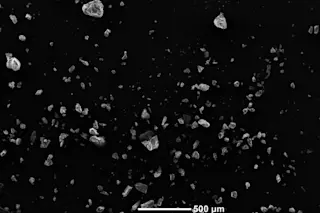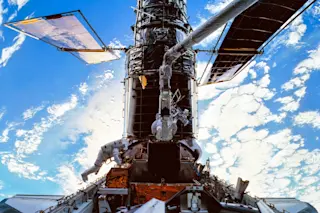Innovation - Mini-Magnetosphere Plasma Propulsion (M2P2)
Getting to Mars, Jupiter, and beyond on free power. Huge quantities of rocket fuel are currently required for fast interplanetary travel. Getting that fuel off Earth and into space costs $10,000 a pound. This innovative concept harnesses the power of the sun by creating a magnetic field that acts as a giant bubble, or sail, to capture solar wind and use its pushing power to propel a spacecraft. With this kind of power, missions to outer planets could be much faster and more rewarding. For example, the Cassini probe to Saturn was launched in 1997. It won't get there until 2004. With this technology that trip could be reduced from seven years to two. Called M2P2 (for mini-magnetosphere plasma propulsion), the technology has the potential of opening up the outer solar system to exploration previously undreamed of. This innovation also has the potential to provide a way to protect astronauts from harmful particle radiation such as that created by solar flares. And unlike the solar sails on planned missions, this "sail" can't be destroyed by wayward meteors.
Biography
Dr. Robert Winglee joined the University of Washington in 1991 as an Assistant Professor of Geophysics. He became an Adjunct Professor in the Departments of Astronomy and Aeronautics and Astronautics. In March of this year, Dr. Winglee was named Professor in the Geophysics program at the university and also began serving as Associate Director of the Washington NASA Space Grant Consortium. That same month he was named Professor and Associate Chair of the Department of Earth and Space Sciences at the University of Washington, a position he holds today. Robert Winglee began his career in 1989 as Senior Research Associate in the Department of Astrophysical, Planetary and Atmospheric Sciences at the University of Colorado, Boulder.
Much of Dr. Winglee's work in space physics has been published in scientific journals. Dr. Winglee earned a B.S. from the University of Sydney in 1980 and a PhD in physics in 1984. A native of Sydney, Australia, Dr. Winglee now resides in Seattle, Washington.














